#primary information
Text

From: Siri Aurdal by Eline Mugaas, Edited by James Hoff and Miriam Katzeff, Primary Information, Brooklyn, NY, 2016
#graphic design#art#sculpture#book#catalogue#catalog#siri aurdal#eline mugaas#james hoff#miriam katzeff#primary information#2010s
27 notes
·
View notes
Text
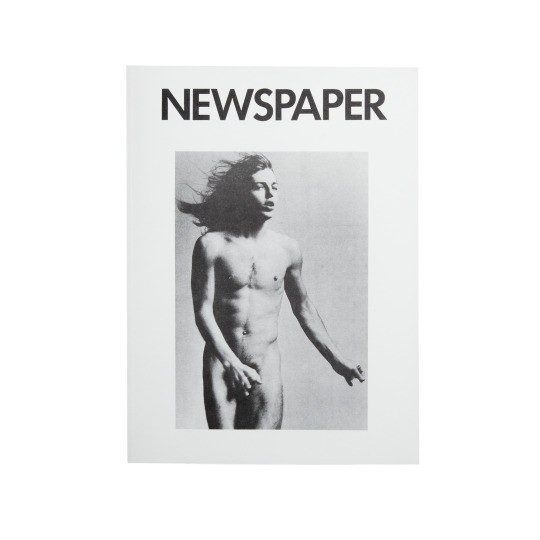


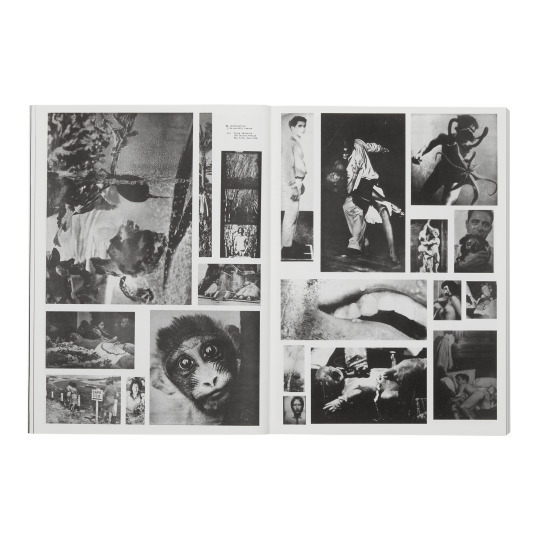

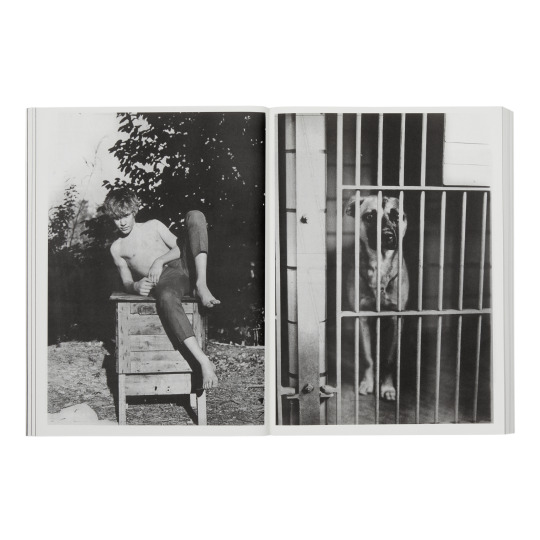
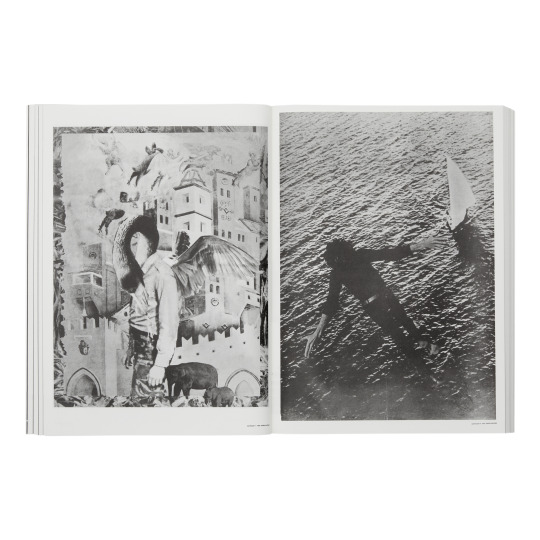


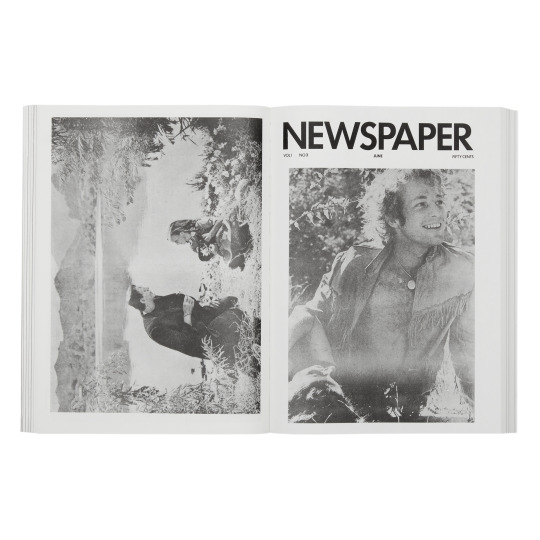

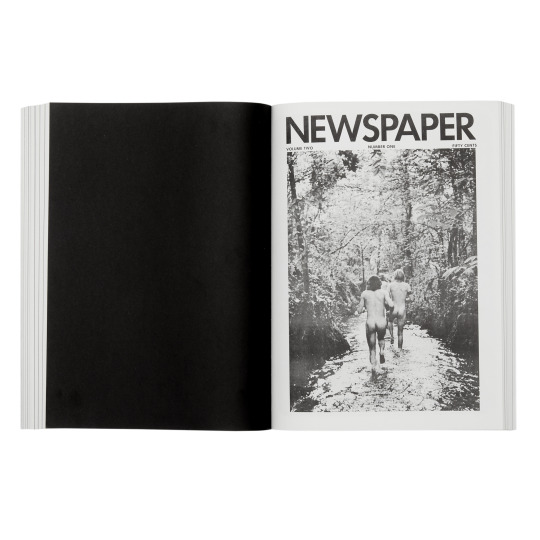
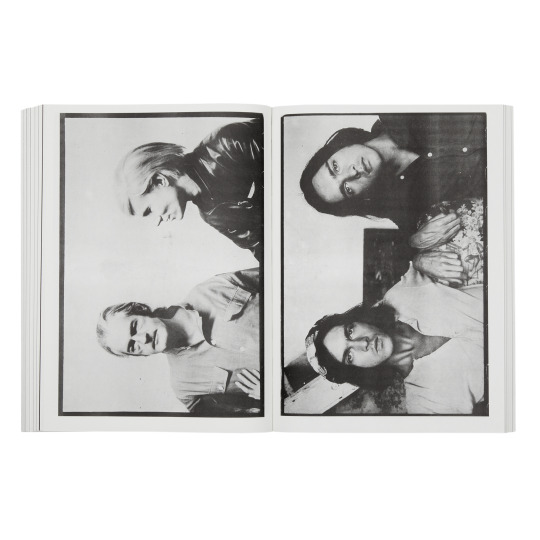
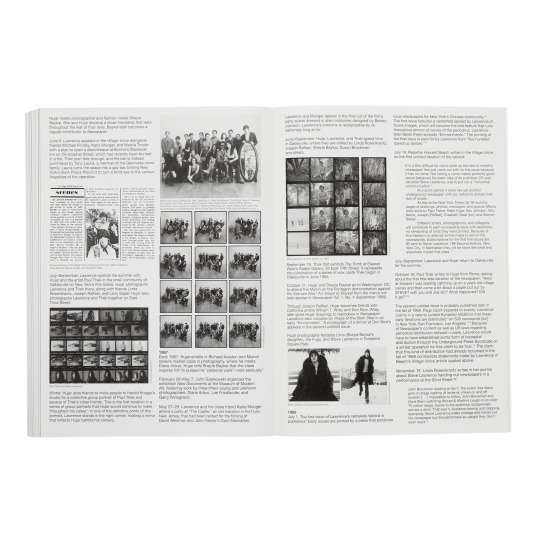
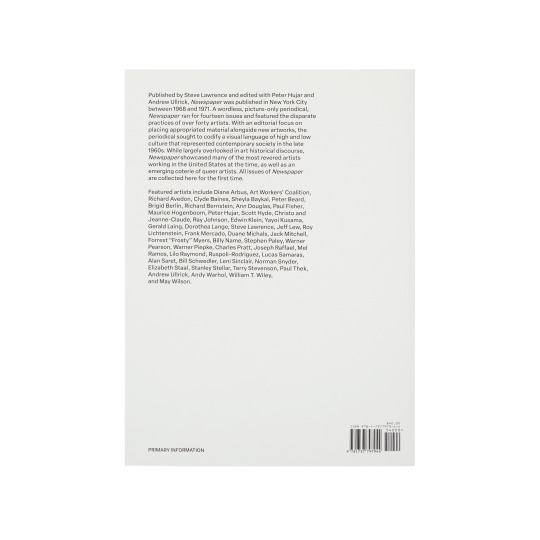
2023年9月15日
【新入荷・新本】
Various Artists Newspaper, Primary Information, 2023
416 pages. 9.75 x 13.38 Inches. Paperback. Edition of 4500.
価格:7,480円(税込)
/
1968年から1971年にかけてスティーヴ・ローレンスが発行し、ピーター・ヒュージャーとアンドリュー・ウルリックが編集に携わったニューヨーク発のタブロイド誌『Newspaper』の復刻版。
『Newspaper』は、言葉を使わず、写真だけを掲載した定期刊行物で、14号にわたって40人以上のアーティストの異質な活動を取り上げています。新しい作品と並行して流用された素材を掲載することに編集の重点を置き、1960年代後半の現代社会を象徴するハイカルチャーとローカルチャーの視覚的言語を体系化しようとしました。美術史的な言説からはほとんど見落とされているが、当時のアメリカで活躍し、尊敬されていた多数のアーティストと、新興のクィア・アーティストの仲間たちを紹介しています。
『Newspaper』は、1969年に創刊されたアンディ・ウォーホルの『Interview』や、レス・レヴィンの『Culture Hero』に先駆けるアーティストが発行するタブロイド誌のひとつですが、他のタブロイド紙とは対照的に、『Newspaper』はイメージに特化していました。
その全14号が初めてこの一冊にまとめられています。
Published by Steve Lawrence and edited with Peter Hujar and Andrew Ullrick, Newspaper was published in New York City between 1968 and 1971.
Newspaper was a wordless, picture-only periodical thatran for fourteen issues and featured the disparate practices of over forty artists. With an editorial focus on placing appropriated material alongside new works, the periodical sought to codify a visual language of high and low culture that represented contemporary society in the late 1960s. While largely overlooked in art-historical discourse, Newspaper showcased many of the most revered artists working in the United States at the time, as well as an emerging coterie of queer artists.
The mid to late sixties was a flourishing period for artists experimenting with new media formats such as books, records, and magazines to create or distribute their work. Newspaper was one of the first artist-published tabloids of its era, preceding Andy Warhol’s Interview and Les Levine’s Culture Hero, both of which debuted in 1969. However, in contrast to other tabloids, Newspaper focused strictly on images.
At a time when photography was not being exhibited regularly in galleries, Newspaper provided an alternative exhibition space for the medium and some of the era’s greatest photographers. The publication’s large size and unbound format encouraged readers to take it apart and hang its pages, which was how Newspaper was installed at the Museum of Modern Art’s influential Information show in 1970.
This is not to say that Newspaper only existed within the narrow confines of the art world, far from it. It lived within (and shared contributors with) a robust network of underground and queer periodicals like The New York Review of Sex, Rags, and Gay Power, among others. Yet, unlike many of these tabloids, Newspaper has largely disappeared from the discourse around underground magazines, queer publishing, and artists’ periodicals.
All fourteen issues of Newspaper are compiled in this volume for the first time.
Featured artists include: Diane Arbus, Art Workers Coalition, Richard Avedon, Clyde Baines, Sheyla Baykal, Peter Beard, Brigid Berlin, Richard Bernstein, Ann Douglas, Paul Fisher, Maurice Hogenboom, Peter Hujar, Scott Hyde, Christo and Jeanne-Claude Javacheff, Ray Johnson, Edwin Klein, Yayoi Kusama, Gerald Laing, Dorothea Lange, Steve Lawrence, Jeff Lew, Roy Lichtenstein, Frank Mercado, Duane Michals, Jack Mitchell, Forrest “Frosty” Myers, Billy Name, Stephen Paley, Warner Pearson, Jurgen Warner Piepke, Charles Pratt, Joseph Raffael, Mel Ramos, Lilo Raymond, Ruspoli-Rodriguez, Lucas Samaras, Alan Saret, Bill Schwedler, Leni Sinclair, Norman Snyder, Elizabeth Staal, Stanley Stellar, Terry Stevenson, Paul Thek, Andrew Ullrick, Andy Warhol, William T. Wiley, and May Wilson.
15 notes
·
View notes
Text



Primary Information has published a facsimile of the exhibition/auction catalogue for In The Name of The Place, a surreptitious, 2-year project by the GALA Committee, organized by Mel Chin and Helen Nagge, to insert artwork as props into Melrose Place. The project culminated in a real-world museum exhibition which itself was worked into the show, and the whole thing was only announced after it was all over. I'm sure Aaron Spelling was amused, and now we can finally get to enjoy the slim volume in facsimile edition. Highly recommended as a book.
#melrose place#gala committee#primary information#mel chin#mel chin and helen nagge#aaron spelling#the 90s#do all these easter eggs mean anything? did they do anything? a few are worthwhile objects but that's about it tbqh#but this book is nice and really captures the most salient aspects of the project#also red bull studios did a huge show of the gala project's work and then absolutely yeeted itself and all trace of the show into the void
6 notes
·
View notes
Text

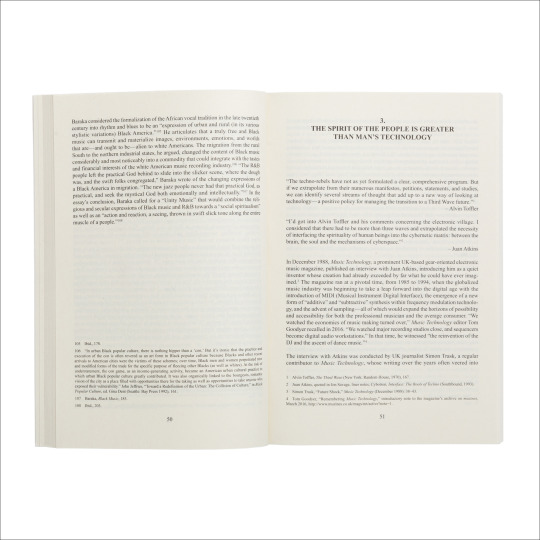


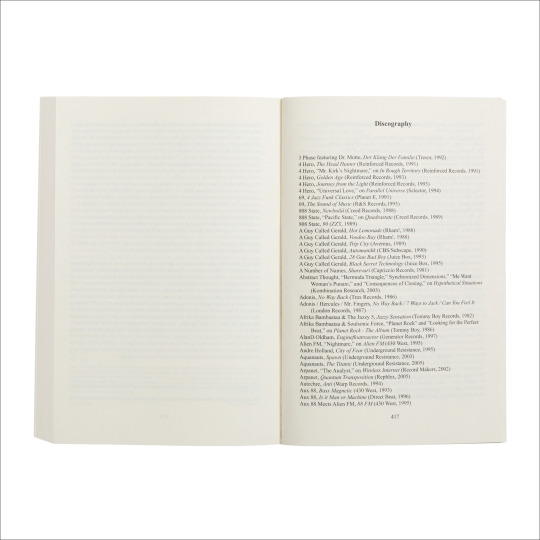
excerpts from DeForrest Brown Jr.'s "Assembling A Black Counter Culture," Primary Information 2022
can't put this book down. crucial is an understatement
images from primaryinformation.org
#Detroit#electronic music#DeForrest Brown Jr.#critical theory#african american history#techno#Primary Information#music history#Kodwo Eshun#Drexciya#electro#afrofuturism#Roland
1 note
·
View note
Text
Mr Perfectly Fine 2.0






#mr perfectly fine#mr perfectly fine (sophie’s version) (ft sophie turner) (2023 version)#don’t yell at me y’all ik we don’t have the details#but I cannot stand a man shaming a woman.#the whole thing about how she was struggling after her pregnancy and he was dragging her out with him#but nooo she’s the partying one#and she was the primary parent for quite a while. right? that is what happened right#but ooooh it’s just been so hard for him to have the kids alone for A COUPLE OF MONTHS#an arrangement they no doubt agreed on#I’m sorry??#I hate men#but also whatever we don’t know them don’t know the details I’m not trying to be definitive#I’m juST SAYING with the information we HAVE at our disposal#he’s made it so easy to point fingers this really isn’t my fault#joe jonas#sophie turner
107 notes
·
View notes
Text
Did anyone else ever have to do that assignment in like the third grade where you have to write absurdly detailed instructions for making a peanut butter and jelly sandwich? And you have include things like "unwrap the bread" and "retrieve a knife" and "unscrew the peanut butter jar"...?
My job is like that sometimes.
#'I typed 'primary' into the search bar and all it showed me was from from the 2000 election'#'did you scroll to the bottom of the results?'#'no I just looked at the first one'#oh boy#it was right there he just had to scroll a little bit through CHRONOLOGICAL information to get to the most recent entries#he's not stupid either he seems like a reasonably intelligent person so I don't know why this needed to be spelled out
29 notes
·
View notes
Text
I've spent pages of my dissertation explaining my gripes with historicist literary criticism and then it's like "I'm a historicist btw"
(...my brain is very tired)
#historical information can be illuminating for literature and literature can offer useful documents for historians#but history-centric takes on literature that neglect. like. actual textual details? bad.#esp bc such takes usually come from people who aren't historians and aren't trained in it ANYWAY#so it's second-rate history as well as second-rate literary criticism#though real historians sometimes trip into very bad literary criticism in the service of history#even when it's not bad literature's utility to other fields is not the primary source of its worth!! i will fight on this!!!#sadly i can't say 'fight me' in the actual diss#anghraine babbles#anghraine whines#ivory tower blogging#literary theory unfortunately
25 notes
·
View notes
Text
Arc System Works 35th Anniversary polls are out! (And In English!)

That means that it's time to show up to the polls! In particular I especially want to vouch for making sure Blazblue keeps it's story-heavy elements and dedication to the characters as Arcsys has expressed that there will be new Blazblue content but also possibly experimenting with different genres or styles. Additionally I just want as many Blazblue fans as possible to be aware that these polls are happening.
Arc System Works 35th Anniversary Survey: Make Your Voice Heard!
For anyone interested in a general feedback survey. Asks about your demographics, history with ASW titles, and suggestions for future titles. Good opportunity to express what parts of games you like and what parts you don't.
Arc System Works 35th Anniversary: Franchise Favorites Poll
For anyone interested in a popularity poll for your favorite Arc System Works game! In addition to every mainline Blazblue game there is also Xblaze (general series), Blazblue Alternative: Dark War, and Eat Beat Deadspike-San as votable options! You can vote once per day until August 28th, 2023.
#blazblue#this is probably good information for other asw game fans as well but its blazblue centric bc thats my primary interest here#i have an Agenda
47 notes
·
View notes
Photo







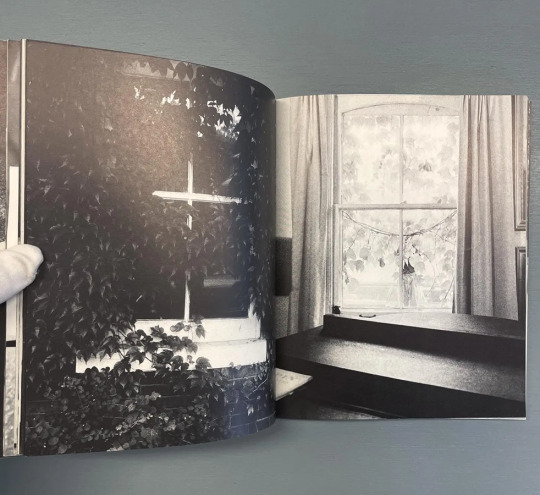

Michael Snow, Cover to Cover, Nova Scotia College of Art & Design, Halifax, Nova Scotia / New York University Press, New York, NY, 1975 [then Primary Information / Light Industry, 2020] [Saint-Martin Bookshop, Bruxelles-Brussel]
#graphic design#art#photography#book#cover#book cover#michael snow#nova scotia college of art & design#new york university press#primary information#light industry#1970s#2020s
95 notes
·
View notes
Text



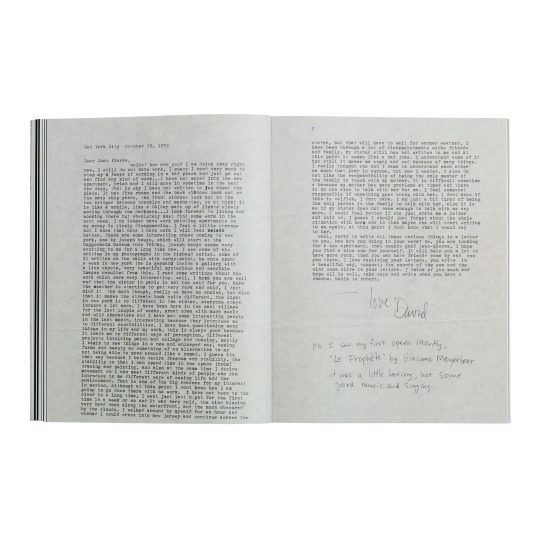

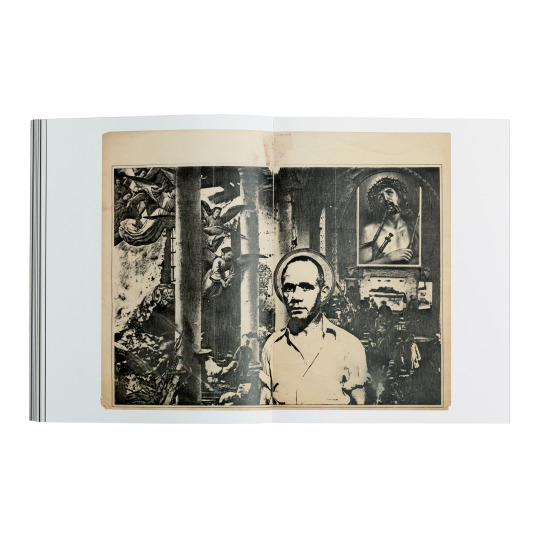

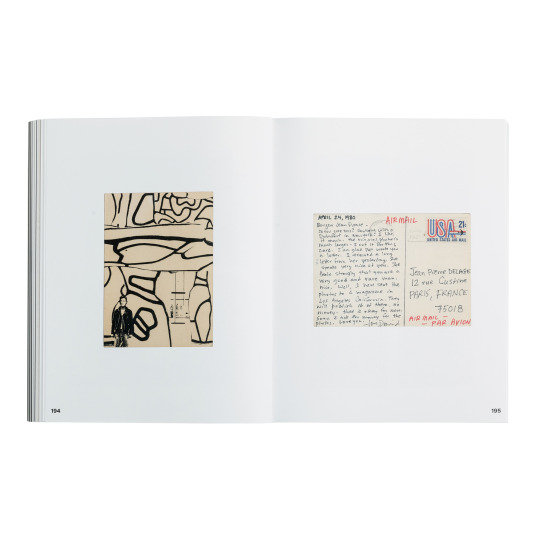
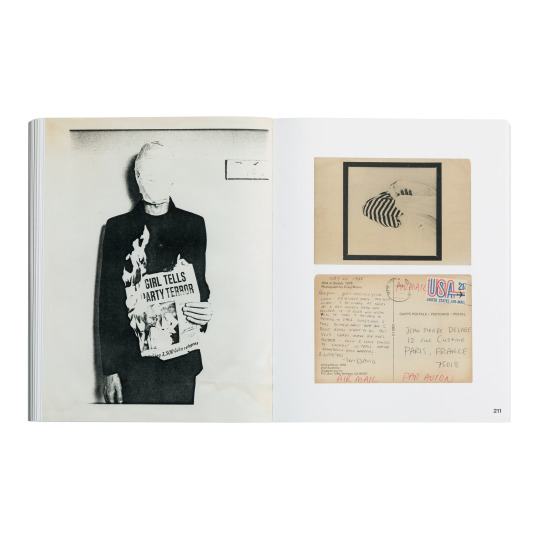
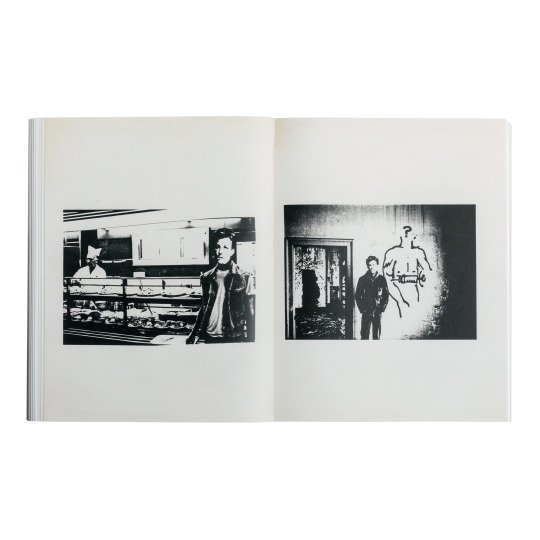


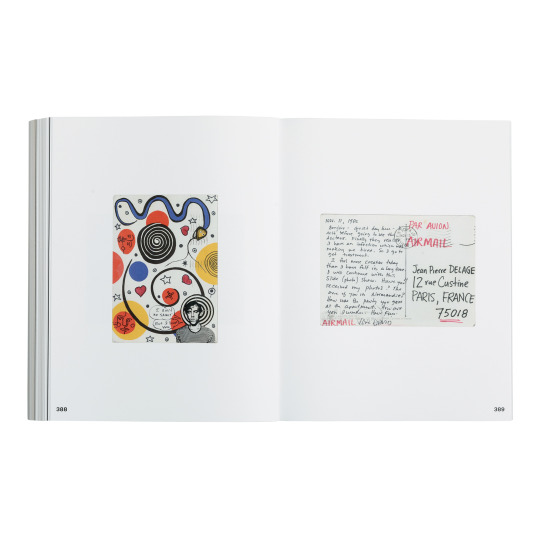
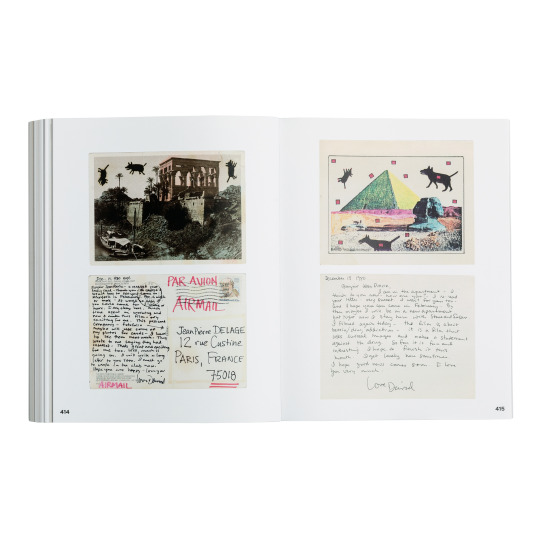
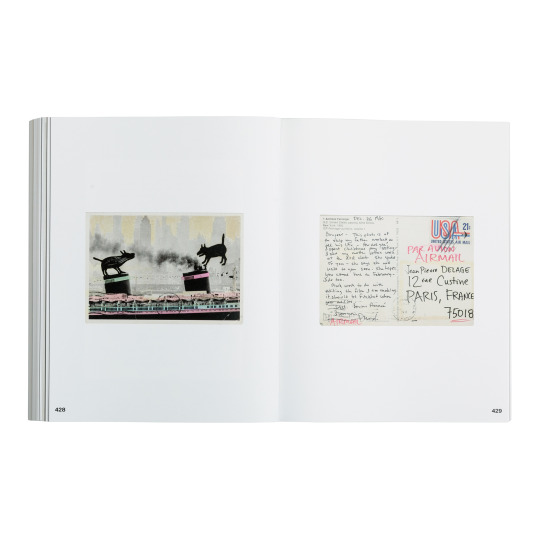


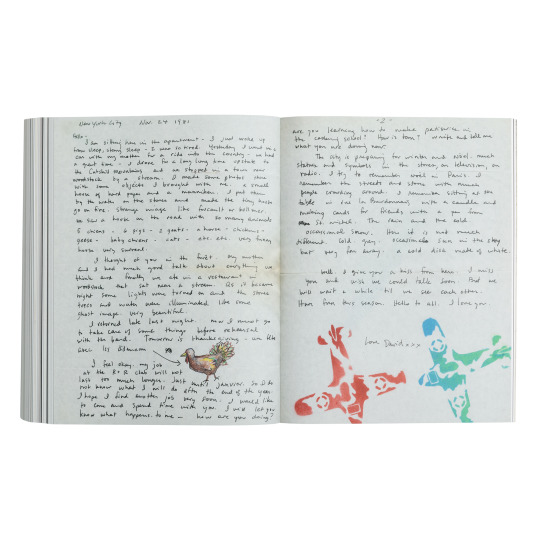

2023年9月30日
【新入荷・新本】
David Wojnarowicz Dear Jean Pierre, Primary Information, 2023
592 pages. 8.5 x 11 inches. Paperback. Edition of 4000.
価格:6,930円(税込)
/
Dear Jean Pierre collects David Wojnarowicz’s transatlantic correspondence to his Parisian lover Jean Pierre Delage between 1979 and 1982. Capturing a truly foundational moment for Wojnarowicz’s artistic and literary practice, these letters not only reveal his captivating personality—and its concomitant tenderness, compassion, and neuroses—but also index the development of the visual language that would go on to define him as one of the preeminent artists of his generation.
Through this collection, readers are introduced to Wojnarowicz’s Rimbaud series, the band 3 Teens Kill 4, the publication of his first photographs, his early friendship with Peter Hujar, his participation in the then-emerging East Village art and music scenes, and the preparations for the publication of his first book. Included with these writings are postcards, drawings, xeroxes, photographs, collages, flyers, ephemera, and contact sheets that showcase some of the artist’s iconic images and work, such as the Burning House motif and Untitled (Genet, after Brassai).
Beyond these milestones, the book offers a striking portrayal of Wojnarowicz as a twenty-something, detailing his day-to-day life with the type of unbridled earnestness that comes with that age and the softness of love and longing. This disarming tenderness provides a picture of a young man just beginning to find his voice in the world and the love he has found in it.
Although the two exchanged letters in equal measure, Delage’s correspondences have largely been lost, leaving us with only a revelatory glimpse into the internal world of Wojnarowicz during what turned out to be his formative years.
David Wojnarowicz (1954-1992) was born in Red Bank, New Jersey. Wojnarowicz channeled a vast accumulation of raw images, sounds, memories and lived experiences into a powerful voice that was an undeniable presence in the New York City art scene of the 1970s, 80s and early 90s. Through his several volumes of fiction, poetry, memoirs, painting, photography, installation, sculpture, film and performance, Wojnarowicz left a legacy, affirming art’s vivifying power in a society he viewed as alienating and corrosive. His use of blunt semiotics and graphic illustrations exposed what he felt the mainstream repressed: poverty, abuse of power, blind nationalism, greed, homophobia and the devastation of the AIDS epidemic. Wojnarowicz died of AIDS-related complications on July 22, 1992 at the age of 37.
3 notes
·
View notes
Text

The OC/Real Life QPR bracket is here!
#qpr smackdown#qpr tournament#bracket#mod zazie#hey primary colors? don't worry. trust me. i didn't forget you <3 (btw cycad informed me THAT was your name & I LOVE IT SO MUCH its so cute
30 notes
·
View notes
Text
not trying to be a plagiarism apologist but I feel like a lot of ppl don't recognise that they're plagiarising bc they don't understand why u cite sources and therefore don't get how to do it properly. and idk if the focus on "copying/stealing" is actually constructive bc their teachers taught them to rewrite stuff in their own words so they don't understand the point of synthesising information.
the point is if ur actually contributing smth new then u NEED sources to underline that you didn't just make up what ur saying on the fly - rather than it being undesirable to admit to any ideas you didn't just dream up all on your own. and the contribution might just be summarising the existing literature, or applying existing ideas to a new context. actually coming up with new theory is the culmination of a lifetime of work.
I don't think we necessarily do anyone favours by pretending it's super obvious and intuitive. it's something you learn by doing, by writing progressively more original work as you get comfortable. the idea that information "belongs" to individuals is not necessarily constructive in the long run. obviously it's not okay to pass other people's work off as your own but understanding sources as proof texts rather than artist credits helps you to understand how you should interact with them. it's interesting to me that a lot of these ppl flip solely between just reading an article to you with different syntax vs just 100%making shit up out of nowhere which kind of tells you they think original work means doing the latter and when they understandably fail to do that all or even most of the time they resort to plagiarism
#try being a girl in a niche field absolutely desperate for sources that even remotely apply to ur area#and if ur writing abt feminism try finding anything that came out after the 1980s when of course feminism Finished and was Complete.#umm also something something about how all information is like open to questioning#another reason u cite ur sources is so someone can go 'that doesn't seem right?'#and eventually track downthe same primary source and make their own conclusions about it#or yknow see that you cited Wikipedia and laugh at you#and that's beyond this scope but whether a source is acceptable also depends so much#on the context & what information ur using it to prove#which like the online lgbtq community really needs 2 come 2 grips w#cuz a source from 1970 tells u what someone believed in 1970.wbich is useful social history#but that doesn't make whayever they're saying like. inherently true
9 notes
·
View notes
Text
I was watching a YouTube video about making zines and the person ended it with a call to action to be informed about Palestine and was like "And what better way than by reading zines???" There are. Um. Better ways...
#like zines can be very good educational resources#but also there is absolutely no editorial oversight and people can just Say Whatever and then print their zines/put them online#so yeah no#zines should not be your primary source of information when there are more reliably vetted sources available#there are many better ways to educate yourself about this particular issue!#and it is much too important to learn about through what could just be some randomer's hot takes!#right on the heels of the james somerton scandal this seems very naive ngl#also like I know I haven't posted much about palestine#but like 1) I do not think that me posting about it on tumblr dot com wields all that much power and influence politically#2) I do not want to use the negligible power and influence I DO have to spread misinformation#and I am too upset by all this to fact check everything reliably#and 3) my blog is not the newspaper and I should not be anyone's source of information on current events#so I am not going to try and be that and get too upset to use tumblr at all#I don't use twitter precisely because it's wall to wall distressing stuff about current events
14 notes
·
View notes
Text
average person who uses the word female in basically any capacity
#personal#its such a bright red flag i dont raelly care if you are personally nonbinary#being informed someone is a transmisogynist but going 'yeah idc i just thought their post was interesting' and then using their exact#terminology for your version of their post. ok. so you are also a transmisogynist then#also . her primary issue with said transmisogynist in her response. was. misandry. so.
7 notes
·
View notes
Text
-:✧Finding Sources✧:-
"You have brains in your head. You have feet in your shoes. You can steer yourself in any direction you choose. You’re on your own. And you know what you know. You are the guy who’ll decide where to go."
- Dr. Seuss.
The internet is a very large place, and countless times you’ll hear people telling you to do your own research. However, informational literacy is hard enough without even knowing what to look for in a source, let alone how to read it.
What to Look for in a Source
There are a few good things to look for in a credible and reputable source. As can be inferred from the meaning of credible and reputable, a credible source is going to come from someone or something that is worthy of confidence, and a reputable source is going to be one that has a good reputation.
Peer Review in Academia
Peer review is the review of a scientific study, academic paper, or similar article by other members of their field with similar or greater credentials. The paper clears several other people who are actively trying to dash the hopes and dreams of the author by finding flaws with their design and reasoning. I mostly kid, but it is a rigorous process that results in the paper being as high a quality as it can be.
Journals
Academic Journals are periodical publications where the most recent scholarship on a subject are routinely published. Often these are shortened to just “journals” or otherwise known as “scholarly journals”, “scientific journals”, or “peer reviewed Journals” These are peer reviewed before being included, and themselves often a good place to search for information.
If a source you find has been published in a journal, you’re in incredibly safe territory for reliable sources! There might be competing information from other scholars to review on the subject, but not only do these publications often include more reading material on the subject cited within, they are often followed by links to others who have cited them in their own writing on the subject.
University Publications
University Publications are also very safe places to look for sources. While not themselves always a research paper, they are often the culmination of the knowledge that the university has gathered and reflect the most recent scholarship on a topic; least they risk making the university look bad. These are sometimes found on a university’s website, in a professor's online class notes, a textbook, or similar writing linked to someone in the field.
Primary Sources
Primary sources are often the gold standard for knowledge on a subject, assuming you can find something that qualifies. However, these are often hard to untangle as they can be dense, old, difficult to read or understand (and compared to an academic paper that’s saying something!) assuming they’re even in a language the reader understands.
Where to Find Sources
There are a number of places to find good sources. A quick search engine check can do wonders, however they can be a whole mess, and even knowing what you’re looking for, they can make it harder to find good quality in the sheer volume.
Research search engines and open source libraries can make this process much easier. Google Scholar and JSTOR are good options, and if you’re really in a pinch you can look at Wikipedia. Many will tell you up and down that Wikipedia isn’t a credible source, but while there is some truth to that, you can click the numbers on the information you want to see the sources at the bottom of a Wikipedia page. You can check these sources individually to see how you feel about them. Wikipedia also has a “Talk” section where the contributors discuss what should be on each page that sometimes has additional sources or information that was not included.
How to Get a Library Card
Please go to your local library! Most likely the librarian will be able to help you. You can also check the website of your local library to see if you can sign up. Often libraries will either have books on the subjects that interest you, or may even be able to order them for their collection. Libraries have also started providing eBooks and other technological services. If this is an option for you, it is highly suggested!
University Library Access
Students at most universities are automatically enrolled into the university’s library system. These people can careen around a paywall like it’s a sliding glass door between you and your dreams, and they have the keycard. Find them, ask them, it only takes like 2 minutes of their time to download and send you whatever file you can’t get, especially if you link it directly.
Non-Academic Sources If you’re at your wits end and the only options for sources are news articles, blogs, or websites this isn’t necessarily a bad thing. If this is a personal account of someone’s experience this can be a good thing! Take extra care with these and see if you can’t find multiple sources saying the same thing. If something is true, most likely you’re going to find multiple people saying the same thing in different ways. However, if you do find multiple sources, look to make sure they aren’t just citing or copying one another in a hellish circle of plagiarism.
#studyblr#acadamia#sourcing#university#school of roses#information accessibility#witchcraft#magic#witchy#witchblr#basics#witch tips#witches#baby witch#how to find sources#Come check us out on Discord!#Link is in the pinned post!#public libraries#primary sources#peer review#academic journals#research#doing your own research#long post#a second post on how to better /read/ academic journals should be posted later this week!#enjoy
67 notes
·
View notes
Text
still disappointed by the amount of people coming up with reasons they can't possibly talk about the genocide happening right in front of us. you're so worried about spreading misinformation or adding your unnecessary opinion you have to defend why you can't do the one thing palestinians are asking us to do and speak up because they can't anymore
#duckspeak#yes i'm vagueposting. what are you even saying at this point#i guarantee nobody is using your random blog as their primary source of information#you are so so so capable of speaking up about the facts. the very simple facts. it is genocide. it is happening right in front of us#palestine lost their voice and so we have to be the voice. it's really so simple
8 notes
·
View notes